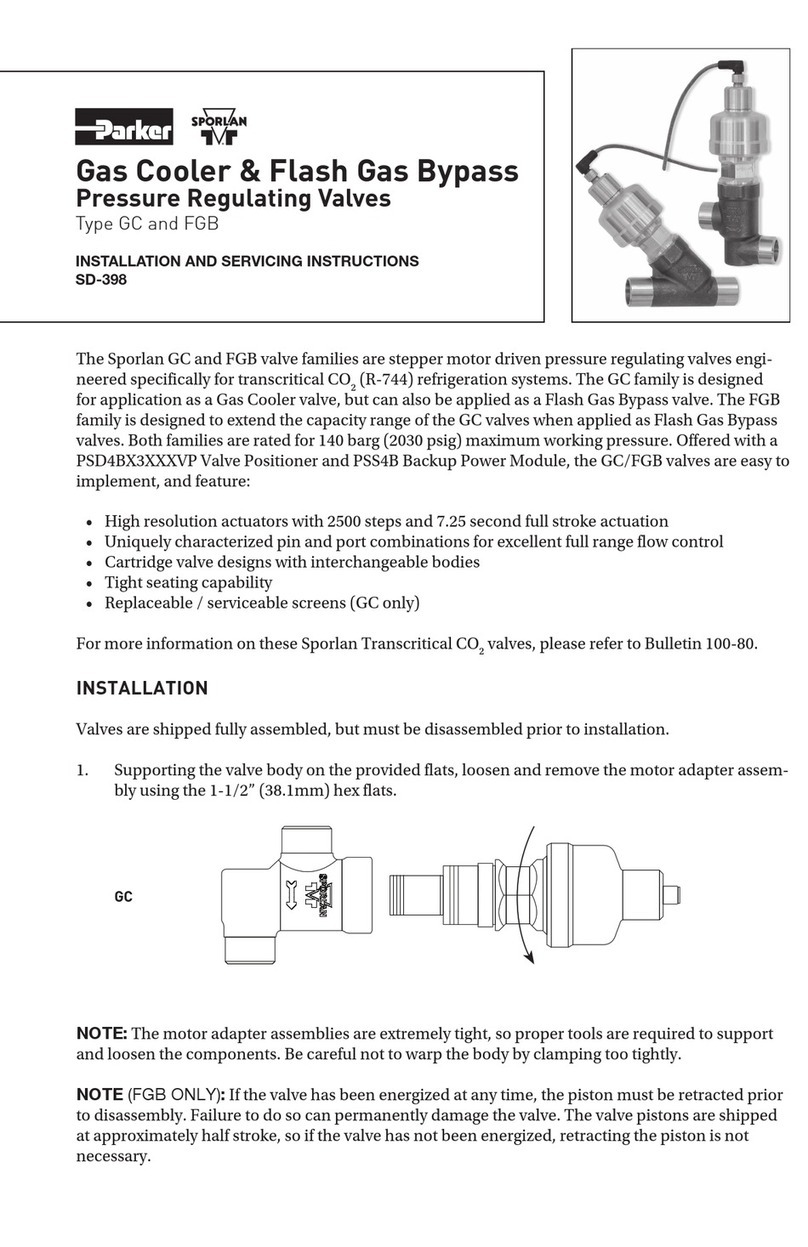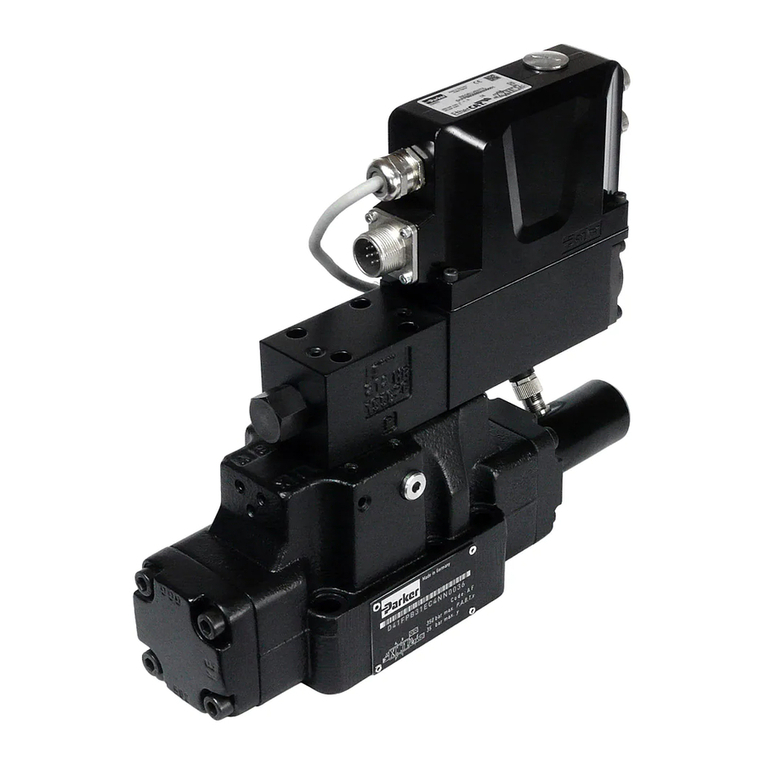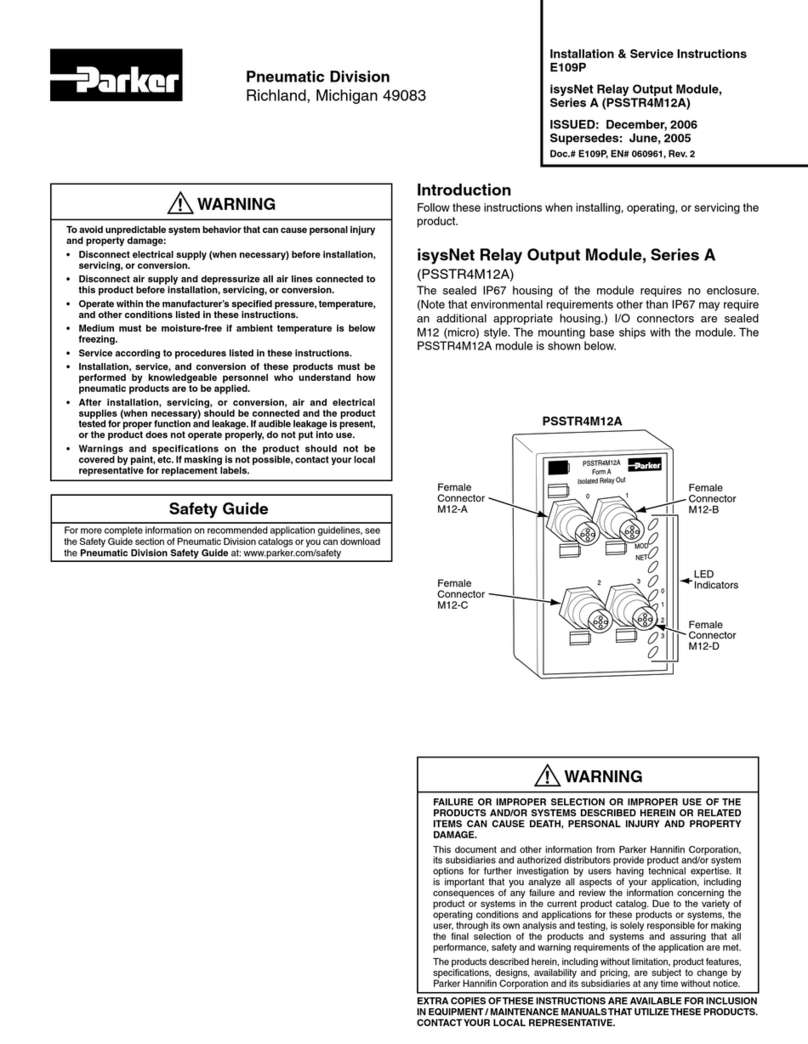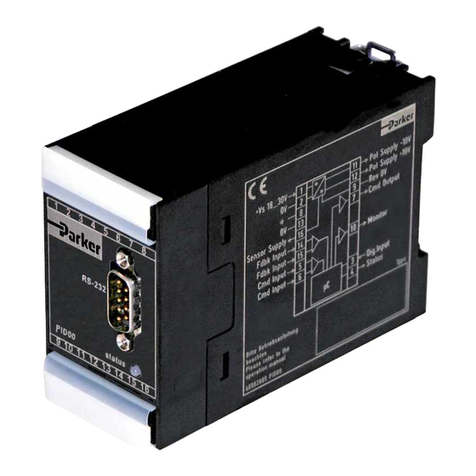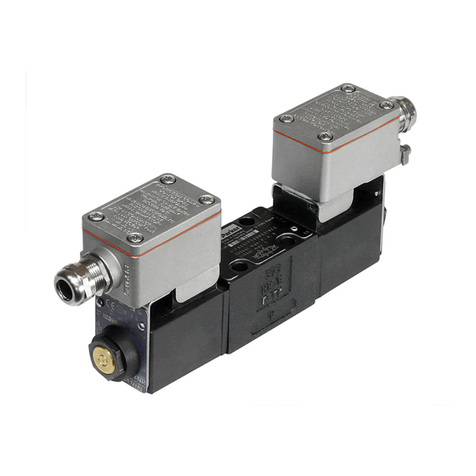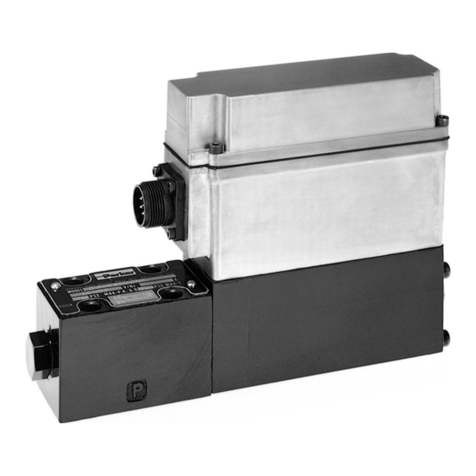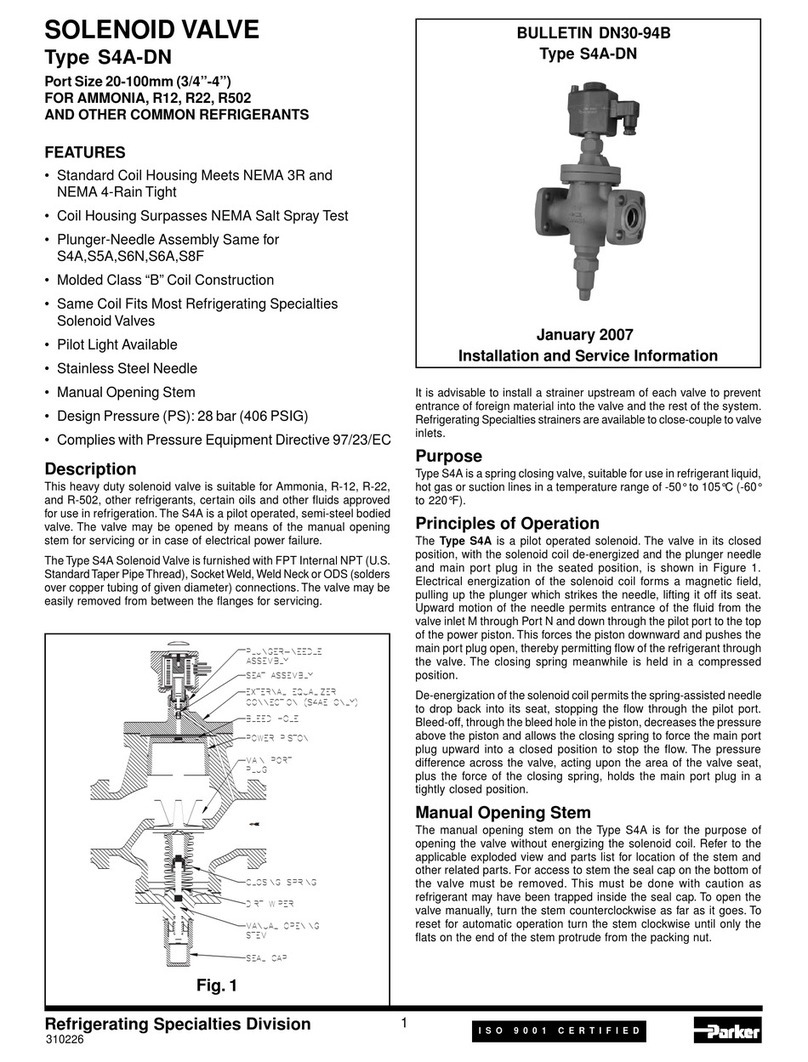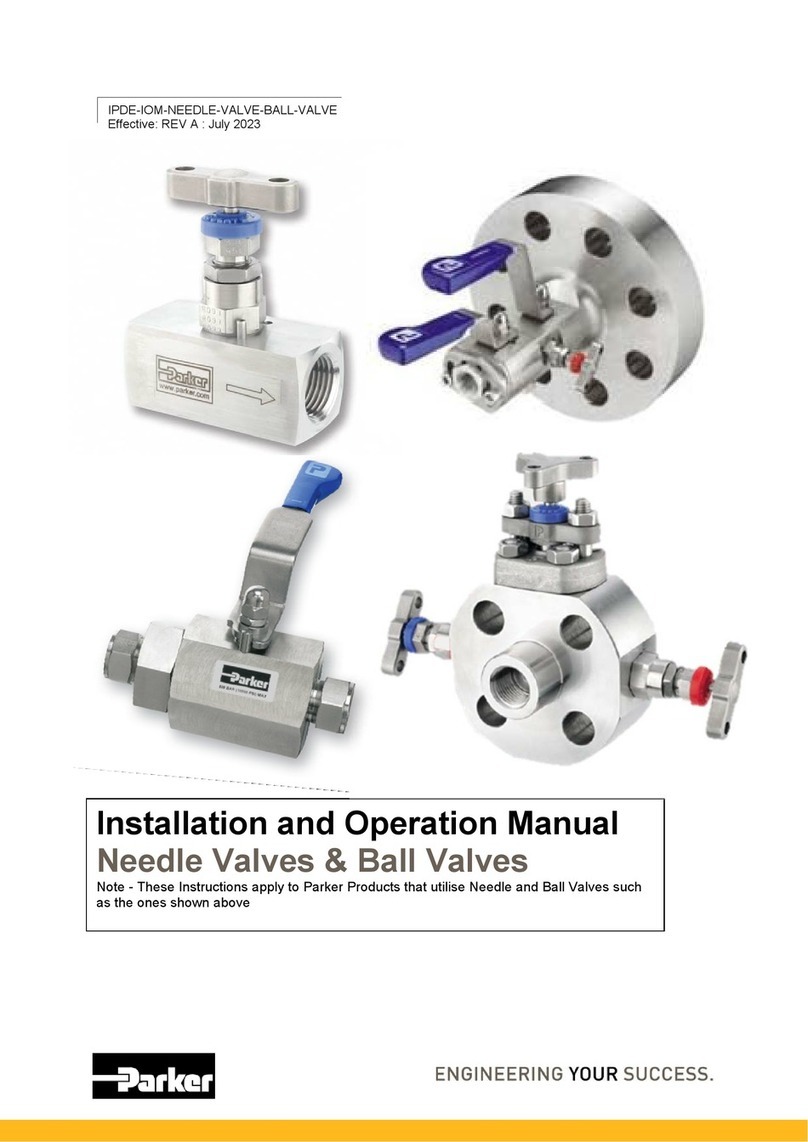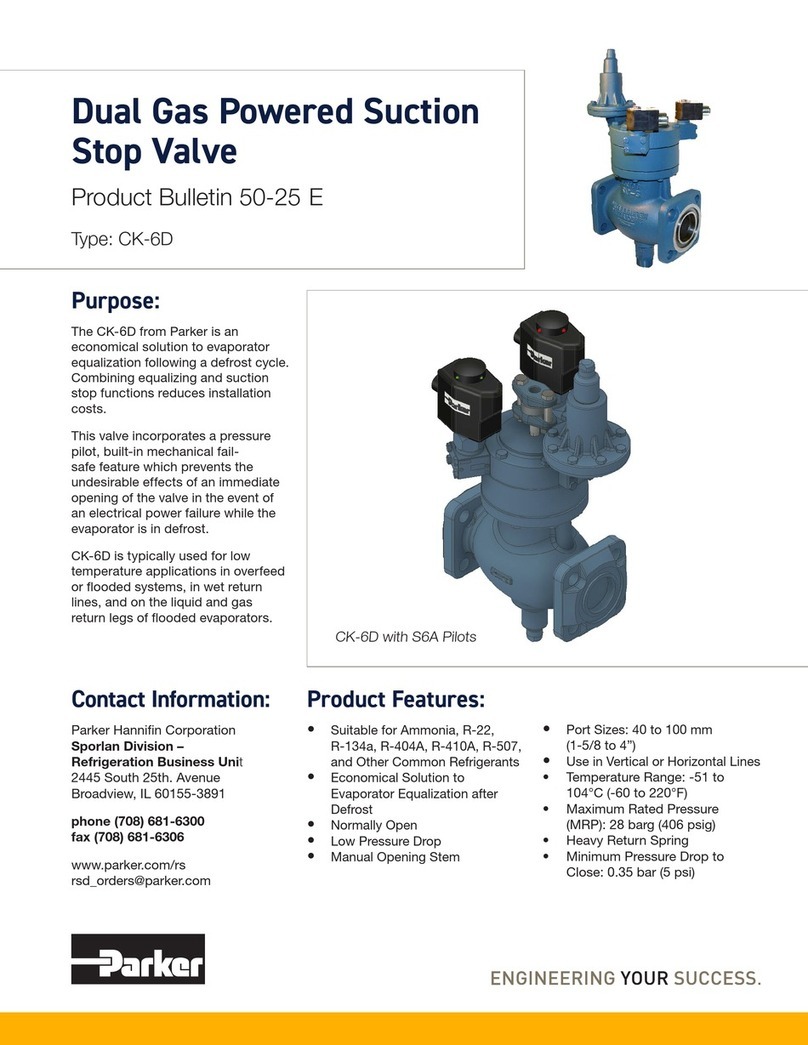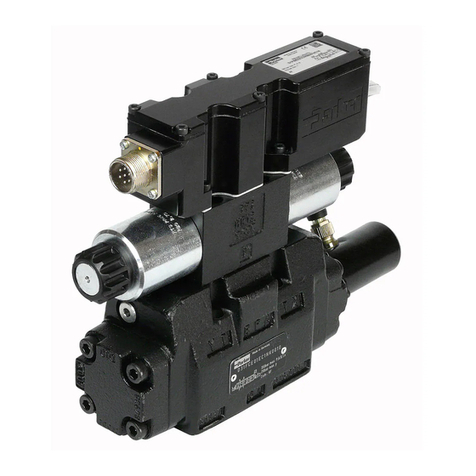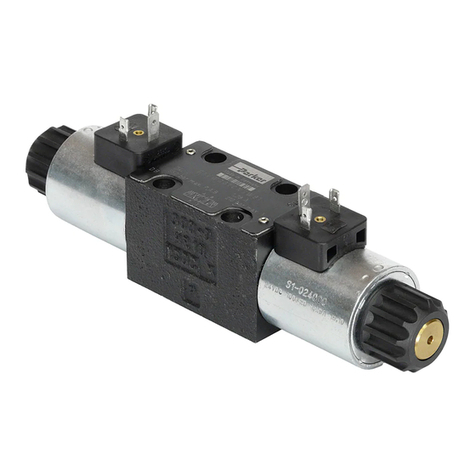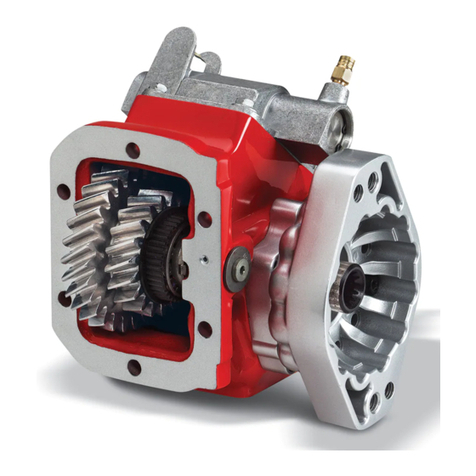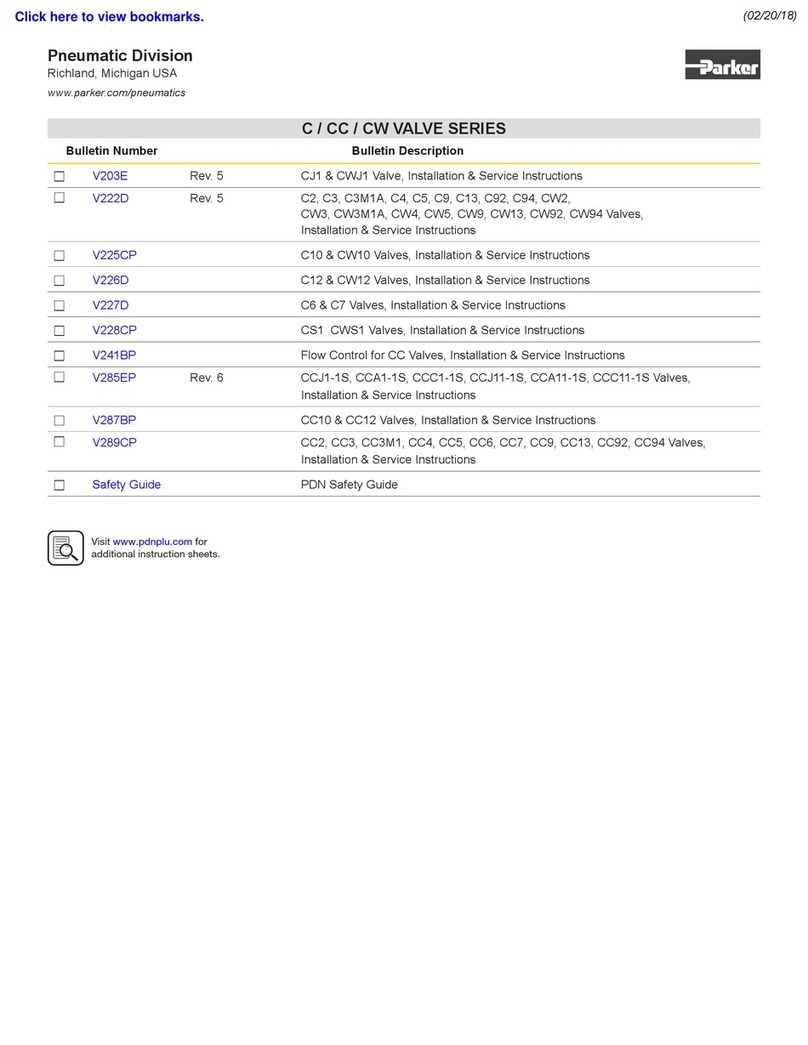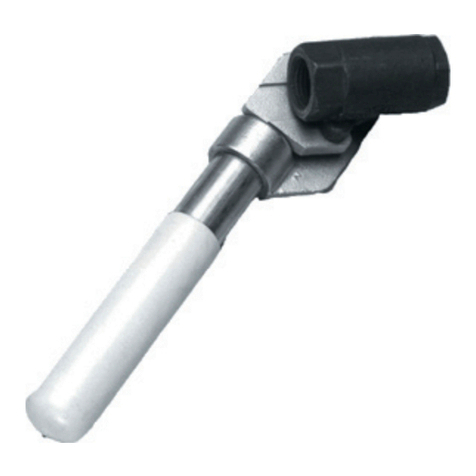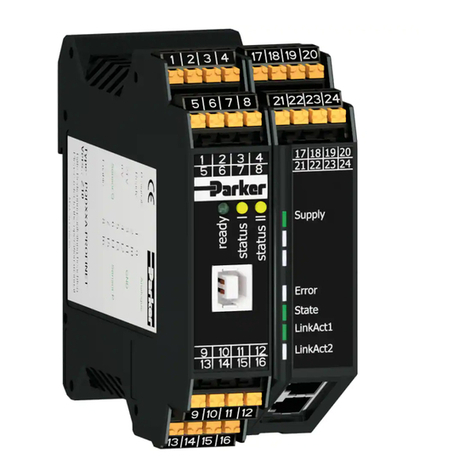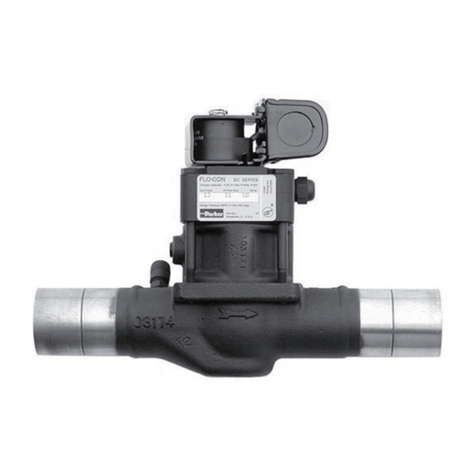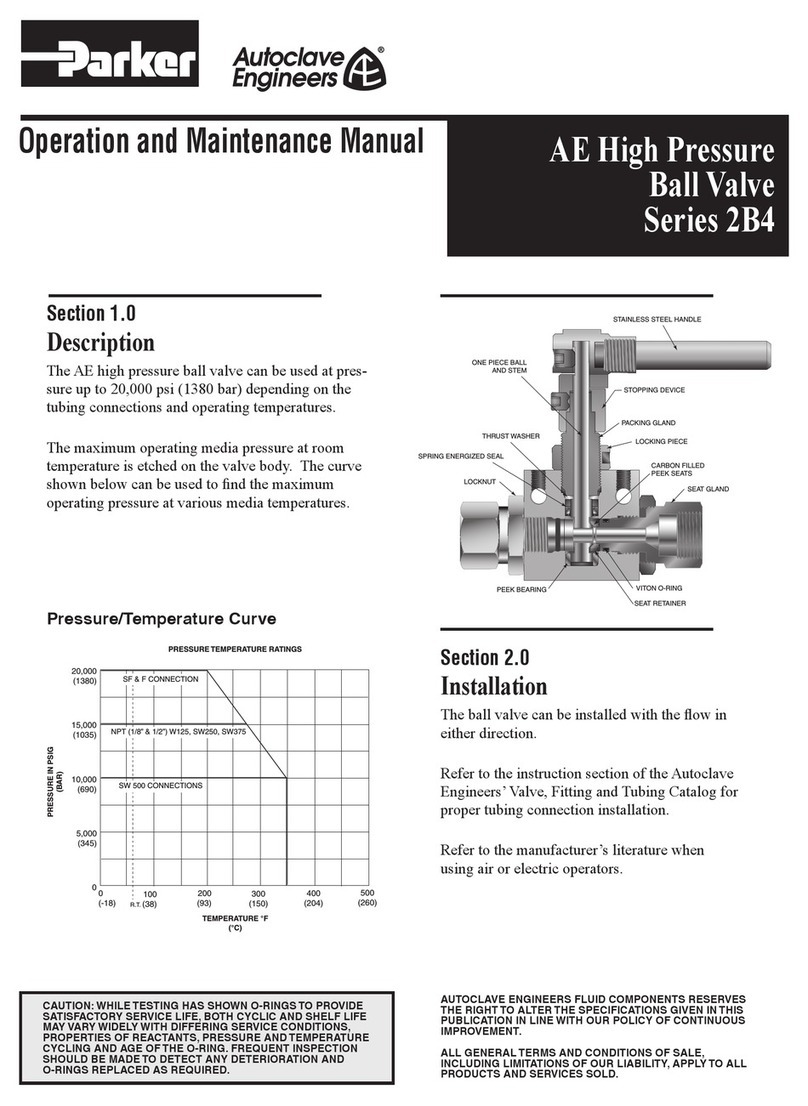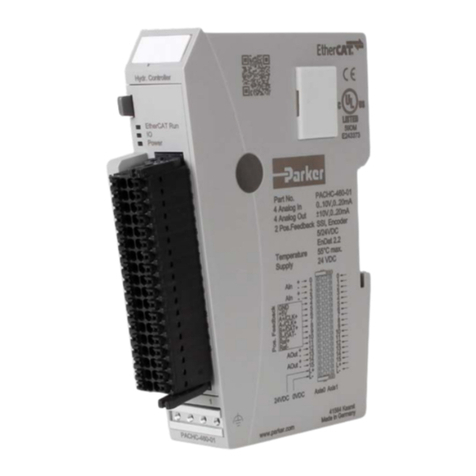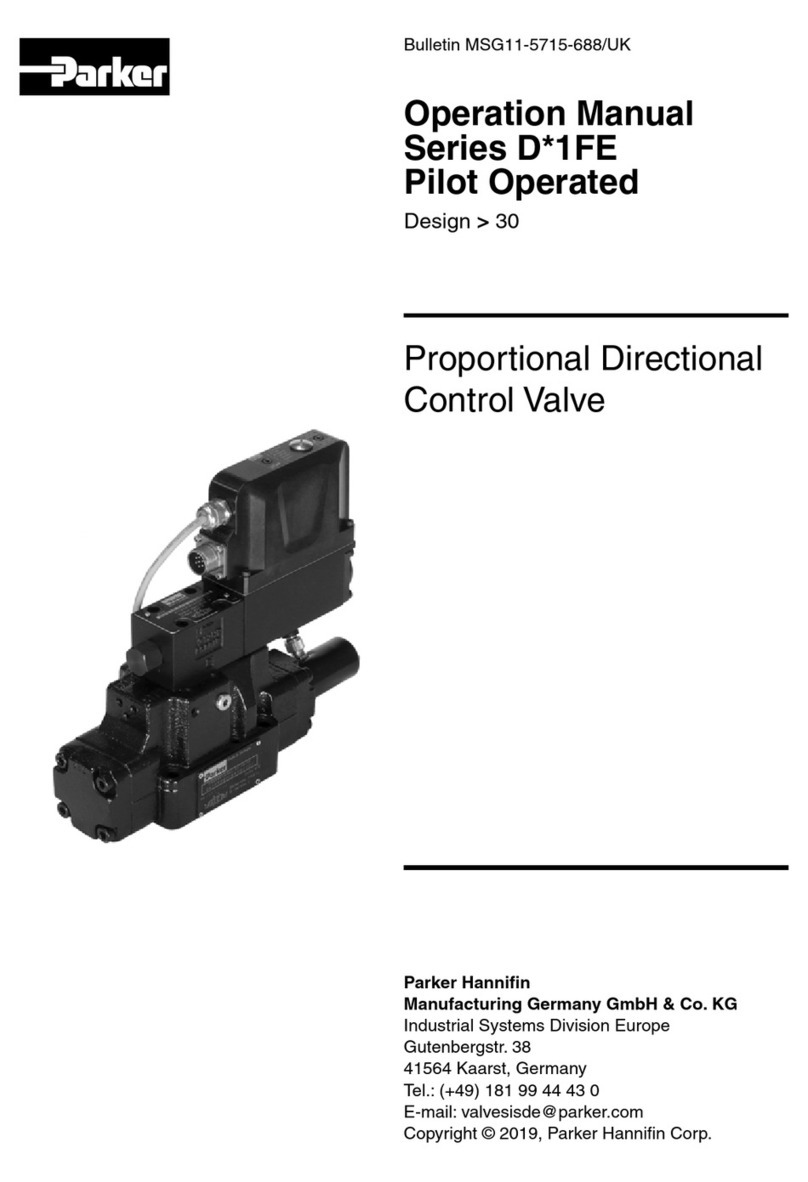
EN - USER’S MANUAL
DE - HANDBUCH
FR - MANUEL D’UTILISATION
IT - MANUALE UTENTE
ES - MANUAL DE USUARIO CEV-S
CEC
Unipolar Electric Expansion Valve
Einpoliges elektronisches Expansionsventil
Détendeur électronique unipolaire
Valvola di espansione elettrionica unipolare
Válvula de expansión electrónica unipolar
RE1.U.9T1.CEV-S.ML.1.2019.5
2 of 15
3.2. IMPROPER USE
The reasonably foreseeable improper uses comprehend all the possible uses in disagreement with what stated in the
chapter “Proper use”.
Special requirements for ATEX products:
The use of these products into an incorrect installation area or with wrong gas mixtures and ambient temperatures is
considered improper use.
4. INSTALLATION
Strictly follow the general installation instructions given at page 14.
Special requirements for ATEX products:
The installation environment shall be compatible with the certication limits of the product, as stated on the
product marking. Always refer to the ATEX certicates / documentation related to the product.
The User is solely responsible for the proper selection of components suitable for classied areas, as dened in
the ATEX 2014/34/EU directive. Only qualied personnel should select the equipment for hazardous areas.
The component shall be installed into an enclosure providing IP 54 rating as a minimum (as per EN 60079-0).
The component shall be installed with a transient protection set at no more than 1.4 x the peak rated voltage at
the supply terminals to the product.
The component shall only be used in an area classied as pollution degree 2 or less, as dened in EN 60664-1.
The nal installation/wiring must comply with EN 60079-14 or equivalent National rules at the place of installation.
5. OPERATION
Proper grade of opening for the valve is achieved by sending a series of electrical pulses to the CEC stator, causing
the rotation of the step motor rotor, which, through an internal mechanism, drives the orice pin to complete closure or
opening. The full stroke of the valve needle, from fully closed to fully open, is covered by 500 steps of rotation; of these,
400 steps are in the linear control range and allow incremental ow changes of 0.25% of full ow. Approximately 32
single-phase steps from full closed are required before the valve orice begins to open. Beyond 500 steps, the ow rate
does not signicantly change. Therefore, this range (32 ÷ 500 steps) is the usable one for ow regulation of the valve and
the step motor controller should be congured and scaled to use the 32 single phase steps (considered from step = 0) as
the 0% of valve capacity and to use 500 steps (considered from step = 0) as the 100% of valve capacity.
Across the initial opening steps (from 0 to 32) the valve is in its fully closed position but with varying levels of seating force.
This is due to the spring compression biasing the needle against the valve seat.
5.1. RE-INITIALIZATION ROUTINE AND OVERDRIVING
The re-initialization routine consists in driving the valve to close position by imposing a minimum of 600 pulses (namely,
“overdriving”) to be sure to totally close it, thus re-establishing the home position (step = 0).
It is necessary for the controller to periodically perform the overdriving routine, to maintain a precise operation of the
valve. It is recommended to perform no more than one overdriving per day, to avoid the pin to be stuck into the orice.
The above overdriving process, performed in the same way, is also necessary after either controller or valve power shut-
down recovery, to re-establish the home position.
5.2. UNIPOLAR MOTOR DRIVING SEQUENCE
Phase (Wire colours)
Pulse Steps Rotated Direction O (Orange) R(Red) Y(Yellow) B(Black)
1 1 Zero HI HI HI
2 2 Zero Zero HI HI
3 3 HI Zero HI HI
4 4 HI Zero Zero HI
5 5 HI HI Zero HI
6 6 HI HI Zero Zero
7 7 HI HI HI Zero
8 8 Zero HI HI Zero
Note: Common (Grey) wire always at +12V (+24V as appl.); “Zero” means 0 V. “HI” means high impedance of phase.
Only 8 steps shown: for further rotation, sequence repeats.
To maximize the resolution, two adjacent windings can be energized simultaneously to move the rotor to a region halfway
between phases (half-stepping).
6. MAINTENANCE
The CEV-S valve body is hermetic and must never be disassembled. The internal parts require no service and are not
replaceable. Periodically clean the exterior part of the stator, to avoid dust accumulation and consequent overheating.
Special requirements for ATEX products:
The valve body does not have ignition sources during the normal working process. The User shall periodically check
for weariness or abnormal noises and, eventually, stop the system.
The User must take all appropriate measures to avoid the risks associated with the building-up and/or presence of
electro-static charges during use and maintenance.
It is recommended that the cleaning of the product is performed by damp or antistatic clothes.
7. TROUBLESHOOTING
#Issue Cause Remedy
1The valve doesn’t
work
Missing power supply Check the power supply presence
Wrong electrical connections Check the electrical wiring of the stator to the controller
Wrong controller settings Re-check the parameters of the controller
Defective stator phase Measure the resistance of each stator phase and ensure it is
equal to the rated data ±10%. If not, replace the stator
Defective stator insulation Check that the insulation resistance between each lead wire
and the valve body is > 1 MΩ. If not, replace the stator
The valve is stuck Replace the valve
Defective controller Check that the voltage at the stator terminals on the controller is
around 12 Vdc (24 Vdc, as applicable) between the Grey wire
and each of the other leads
OPENING
CLOSING
